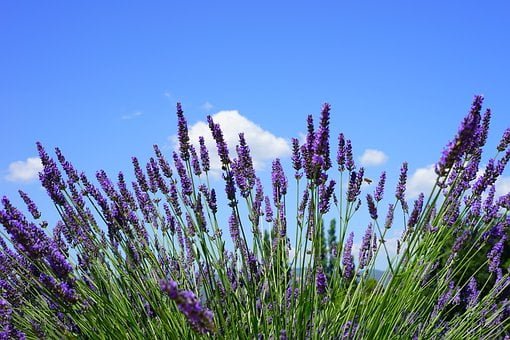Wild herbs are plants that grow on their own in nature, without people planting them. They’re really important for things like surviving in the wild, learning outdoor skills, and doing activities like camping and hiking. These herbs are super useful when you’re out in the wild because they give you things like food, medicine, and practical stuff you might need. It’s really important to learn how to recognize and use these wild herbs if you’re going to be exploring the wilderness. You can cook with them, make herbal teas, help with small health problems, and even keep bugs away naturally. Knowing about the different wild herbs and what they’re good for is super helpful when you’re on your own in the wild and want to do well.
Medical properties of wild herbs:
People have been using wild herbs for a very long time to help with different health problems. These plants can do cool things, like making a sore throat feel better or stopping insect bites from itching. One example is chamomile flowers, which you can turn into a cozy tea that calms you down. Another plant, yarrow, has leaves you can squish and put on cuts to help them heal faster.
Remember, even though wild herbs can help, they’re not the same as going to a doctor. It’s a good idea to talk to a healthcare professional before using wild herbs as medicine, especially if you’re already dealing with health issues or taking medicine. Your safety comes first!
Here are some common medicinal herbs:
Let’s talk about some herbs that people use for their health. But here’s the thing: we don’t know everything about how well they really work or how they might mix with other stuff you take, like vitamins, medicines, or food. Sometimes, the things added to these herbs can also cause problems when they mix together. Don’t think that if something is from nature, it’s always safe. So, if you’re using any of these herbs or supplements, it’s a good idea to tell your doctors about it. They need to know what’s going on with your health.
1. Chamomile:
Chamomile is a tiny flower. Some people think it’s a miracle worker, able to help with all sorts of things. In the U.S., many folks use it when they’re feeling anxious or need to relax. Over in Europe, it’s used to help wounds heal and bring down swelling. But here’s the catch: we don’t really know for sure how well it works for different issues. People either drink it as tea or put it on their skin like a squishy pad. The people who make sure things are safe in the U.S. (called the FDA) say it’s alright. But, if you take other things that make you sleepy, chamomile might make you even sleepier. Also, it could mess with how your body uses some medicines, making the medicine level too high in your body.
You know what else? If your skin is bothered from cancer treatment, putting chamomile on it might help. And if you have to deal with vomiting during chemotherapy, taking chamomile in a pill form could be helpful.
2. Echinacea:
Echinacea, a plant with leaves, stems, and roots that people use to try and stop colds, the flu, and infections. They also use it to help wounds heal. A bunch of studies have looked at how well echinacea can prevent or make colds shorter, but they couldn’t say for sure. Some studies say it might help with infections in the upper parts of our breathing.
It’s better to use echinacea for a short time, because other studies show that using it for a long time can mess with how our immune system works. Always talk to your doctor before using it with other medicines you might be taking. Oh, and if you’re allergic to plants like daisies, you might also react to echinacea. Daisy family means plants like ragweed, chrysanthemums, marigolds, and daisies.
3. Feverfew:
It is a plant with leaves that has been used for a long time to help with fevers. Nowadays, many people use it to try and stop migraines and also to help with arthritis pain. Some studies have found that certain types of feverfew can help prevent migraines.
But here’s something to watch out for: if you chew the leaves, you might get sores in your mouth, and sometimes it can upset your stomach. If you suddenly stop taking feverfew for your migraines, your headaches might come back. It’s not a good idea to take feverfew with certain pain medicines called nonsteroidal anti-inflammatory drugs because they might change how well the feverfew works. And if you’re on medicines that stop your blood from clotting too much, like warfarin, you shouldn’t take feverfew either.
4. Garlic:
The stuff that makes your food taste so good. But guess what? It’s not just tasty, it’s also got some good stuff for your health. The things that come from garlic can help fight germs, protect your heart, and might even stop cancer from growing. Some folks believe it can also help lower cholesterol and blood pressure, but not everyone agrees. The people who make sure things are safe in the U.S. (called the FDA) say garlic is okay to use. However, be careful because it can make you bleed more, especially if you’re already taking blood-thinning medicine like warfarin. So, don’t take a lot of it before you go to the dentist or have surgery.
5. Ginger:
It’s like a root that people use to help when they feel sick to their stomachs or when they’re on a bumpy ride. Some studies say ginger might help with nausea caused by being pregnant or going through chemotherapy for cancer. People are also looking into how ginger can help during surgery and against cancer. This root does a lot of things, probably because it can fight inflammation and has things that are good for your body. Just remember, some folks might feel gassy, bloated, or have a bit of heartburn or nausea after using ginger.
6. Ginkgo:
A leaf from a special tree. People make a kind of medicine from these leaves to help with different things like asthma, bronchitis, feeling tired, and hearing a ringing sound in the ears (tinnitus). Some folks even use it to try and make their memory better and protect their brain from getting sick.
A few studies say it might help a little bit, but we’re not sure how exactly it does that. You should only use the medicine made from the leaves, not from the seeds, because the seeds can be dangerous and even cause seizures or death if you eat a lot of them. Also, some people think ginkgo might make you bleed more, so it’s not a good idea to take it with certain medicines that do the same thing, like pain relievers or blood thinners.
7. Ginseng:
It’s like a special root that some people use to feel more energetic and as something that might make romance more exciting. People even call it a cure for everything. But the research isn’t clear about how well it really works. It’s hard to figure out because words like “vitality” and “quality of life” can mean different things to different people. The quality of ginseng you get can also be different from one place to another. Be careful though, because it might make your blood pressure go up and your heart race faster. The folks who watch over things in the U.S. (called the FDA) think it’s safe, but you shouldn’t take it with certain medicines like blood thinners, pain relievers, or hormones. If you have diabetes, it’s best to skip ginseng.
8. Goldenseal:
People use its root and other parts to help with diarrhea and when their eyes or skin get irritated. It’s also used as something to keep things clean. Some people even think it can help with colds, but we’re not sure about that. Inside goldenseal, there’s something called berberine, which comes from plants and has been used as medicine for a long time in places like Ayurvedic and Chinese traditions. It seems to really work for diarrhea, but you shouldn’t take too much of it because it could be harmful. It might make your skin, mouth, throat, and stomach feel uncomfortable.
9. Milk thistle:
It’s like a plant with a special fruit that some people use to help their liver and lower their cholesterol. They also think it might slow down the growth of cancer cells. This plant comes from a place called the Mediterranean region. People have been using it for a really long time, especially when they have liver problems. But we’re not completely sure if it’s really helpful for liver issues.
10. Saint John’s wort:
It’s a flower and a leaf from a plant. People use it to try and feel better if they’re feeling sad or low (depressed). Some studies say it can make a little difference for people with mild or moderate depression, but we’re not sure if it helps with severe depression. Some folks might also become more sensitive to light if they take a lot of it. But here’s the important thing: this plant can mix in a dangerous way with medicines that a lot of people use. So, always talk to your doctor before using this herb. It’s important to tell your doctor about what you’re using or taking.
11. Saw palmetto:
It’s like a little fruit that some people use to help with problems when they pee because of something called “benign prostatic hypertrophy” or BPH. But new studies show that it might not really work for this problem. Some people might feel a bit uncomfortable in their stomach or get a headache from it.
12. Vlerian:
It’s a root that people use when they have trouble sleeping or they’re feeling really nervous. Some studies say it might help you sleep better, but we’re not totally sure. In the U.S., they even use valerian to make root beer and other foods taste good. Remember, just like with any medicine from plants, it’s always best to talk to your doctor before you take it. They need to know what’s going on with your health.
Some common Cooking Herbs:
Here are some herbs that people use in cooking, and you might find them in lots of kitchens:
1. Basil:
This herb comes in different kinds and has a strong taste that’s a mix of licorice and cloves. People use it in pasta sauces and pesto. Fresh basil is better than dried. It’s popular in Mediterranean cooking, and it’s great with tomatoes.
2. Bay leaf:
Bay leaf adds a woodsy taste to sauces, stews, and grilled meats. You can find dried bay leaves in stores. Put them in while cooking to make things tasty, but take them out before eating.
3. Cilantro:
Cilantro has a strong smell that some people say is like soap. It’s good with spicy foods. People use it in salsas, stir-fries, and curries. Put it in near the end to make the taste the best.
4. Dill:
Dill has a light taste and is good in salads, fish, eggs, and more. It’s used in sauces and dressings. Put it in at the end of cooking so it doesn’t lose its taste. Fresh dill is better than dried.
5. Lemongrass:
This tastes sour like lemons and is used in teas and soups. It’s in Thai and Vietnamese cooking. You cut it and put it in dishes, but take it out before eating.
6. Marjoram:
It’s a bit like oregano but sweeter. It’s good with meats like pork and lamb. Add it near the end of cooking for the best taste.
7. Oregano:
This herb is strong and good in tomato dishes like pizza sauce. It works with veggies and meats too. Dried oregano is fine to use.
8. Parsley:
Parsley has a slightly peppery taste. People use it to make dishes flavorful and as decoration. Parsley with flat leaves is nicer than the kind with curly leaves. Fresh is better than dried.
9. Rosemary:
Rosemary has a strong flavor that’s a mix of lemon and pine. It’s used with meats, soups, and more. You can use fresh or dried.
10. Sage:
Sage has a strong taste that’s a little bitter. It’s used with meats like pork and beef. A little dried sage is enough because it’s strong.
11. Thyme:
Thyme is good in soups, stews, and sauces. People use it with other herbs too. It has a strong flavor, so use a little.
These herbs make your food taste amazing!


